AMD Ryzen 9 7950X Review: A Goat For The Plebs?
Is 16 cores and 32 threads enough for every desktop user? AMD and Intel efforts to abandon the High-End Desktop market mean the end for platforms like sTRX4 and LGA 2066, but with so much PCIe being added to CPUs at no cost to chipset interfaces, today’s mainstream platforms may just be enough to satisfy most HEDT builders. Conversely, the cost of supporting these interfaces on lower-model boards might just price the “mainstream” platforms of both firms beyond the reach of entry-level buyers. Those moves still give the mainstream desktop market a broad center, and the best processor within this market may be the Ryzen 9 7950X.
| AMD Ryzen 9 7950X | AMD Ryzen 7 7700X | AMD Ryzen 5 7600X | Intel Core i9-12900KF | |
| CPU Cores | 16 | 8 | 6 | 16 |
| Threads | 32 | 16 | 12 | 24 |
| Base Clock | 4.5GHz | 4.5GHz | 4.7GHz | 3.2GHz |
| Boost Clock | Up to 5.7GHz | Up to 5.4GHz | Up to 5.3GHz | Up to 5.2GHz |
| L1 Cache | 1MB | 512KB | 384KB | 1.4MB |
| L2 Cache | 16MB | 8MB | 6MB | 14MB |
| L3 Cache | 64MB | 32MB | 32MB | 30MB |
| Stated TDP | 170W | 105W | 105W | 241W |
| CPU Socket | AM5 | AM5 | AM5 | LGA 1700 |
Get it at Amazon

(click for availability)
AMD’s top-model sample arrived after we’d already made commitments regarding the rest of our coverage for this month, but at least its Ryzen 7 and Ryzen 5 versions were available for our launch-day coverage. The biggest difference is that Ryzen 9 models are equipped with both CCDs (Core Complex Dies) while the Ryzen 7 and Ryzen 5 have only one.

Things that make AMD’s new processor series different from its predecessors are incremental, regardless of how AMD sells minor updates such as the doubling of L1 cache, support for DDR5, and a shrink from 7nm to 5nm die process for CCDs. Of course even a group of small changes could be enough to secure AMD’s performance leadership if the firm’s claimed 13% instructions-per-clock (IPC) increase over the previous generation gets combined with up to a 29% increase in clock frequency.

Ryzen 9’s box is roughly twice as thick as Ryzen 7’s, and you’re probably wondering what that extra space gets you? We found nothing inside but a cardboard liner, a plastic CPU and case sticker holder, a manual, and a block of foam that’s roughly twice as thick as the one included in lower models. The foam feels like neoprene.

We’re still trying to figure out why AMD would bother with the extra packaging…perhaps as a theft deterrent? We’d suggest something less likely to get noticed by conservationists and let retail stores worry about securing their high-value merchandise. Perhaps a package the size of a DVD box would be best since the security devices that already exist for those are mostly going unused.

We were a little surprised to see a slight (50MHz) overclock when using the ASRock X670E Taichi’s default firmware settings, as we thought we’d need to manually enable AMD’s Precision Boost Overclocking to achieve anything between its maximum boost clock (5.70 GHz) and its so-called F-max (5.85 GHz).
| Test Hardware | |
| CPUs | AMD Ryzen 9 7950X: 16C/32T 4.5-5.7 GHz, 64MB L3 Cache, Socket AM5 AMD Ryzen 7 7700X: 8C/16T, 4.5-5.4 GHz, 32MB L3 Cache, Socket AM5 AMD Ryzen 7 7600X: 6C/12T, 4.7-5.3 GHz, 32MB L3 Cache, Socket AM5 Intel Core i9-12900KF: 16C/24T, 3.2-5.2 GHz, 30 MB L3 Cache, LGA 1700 |
| CPU Cooler | Alphacool Eisblock XPX CPU, Eisbecher D5 150mm, NexXxoS UT60 X-Flow 240mm |
| Motherboards | ASRock X670E Taichi: Socket AM5, BIOS 1.09 ASRock Z690 Taichi: LGA 1700, BIOS 1.43 |
| Graphics Card | Powercolor Red Devil Radeon 6750 XT: 2324-2623MHz GPU, 12GB GDDR6 |
| DRAM | G.Skill F5-6000J3038F16GX2-TZ5N 2x16GB (32GB) DDR5-6000 CL30-38-38-96 1.35V |
| Power | be quiet! Dark Power Pro 10 850W: ATX12V v2.3, EPS12V, 80 PLUS Platinum |
| Hard Drive | Sabrent Rocket 4 Plus 2TB PCIe 4.0 M.2 SSD |
| Sound | Integrated HD Audio |
| Network | Integrated Wi-Fi |
| Graphics Driver | AMD Adrenalin Edition 2022.10.1 |
Introduced as a hardware patch to our ageing test system near the end of our Zen4 launch coverage, PowerColor’s Red Devil Radeon RX 6750 XT becomes the exclusive graphics solution for AMD’s new platform (and any subsequent Intel platform) in today’s coverage.
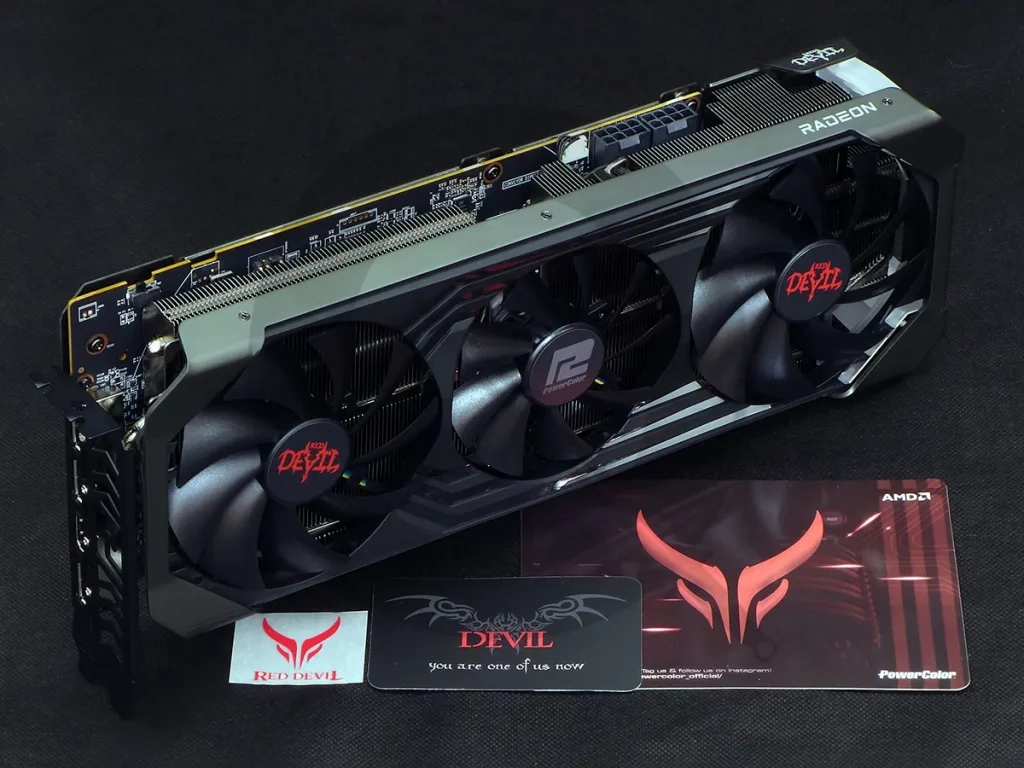
Benchmark Results
The 7950X beat its single-CCD siblings in Sandra Memory Bandwidth, but with a bit more latency. AIDA64 responds far more favorably to what is, essentially, the presence of a second 8-core CPU.
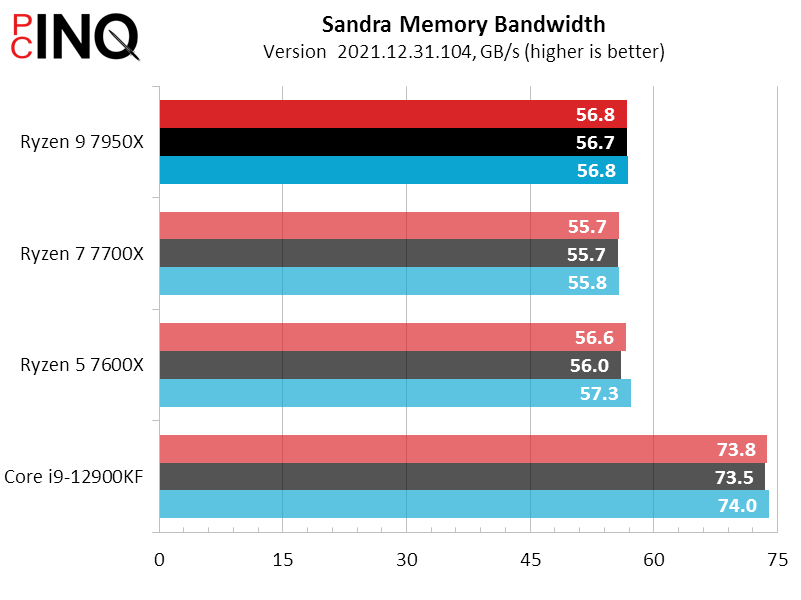



The mighty 7950X advances CPU prowess in 3DMark Time Spy, but still falls a bit behind the 12900KF until we feed it what the platform really wants: 3DMark’s “CPU Profile” test shows the 7960X tearing off the 12900KF at max threads and 16 threads, and we think that’s because the Intel solution has only eight “performance cores”. In fact, by reducing the number of threads to eight and then four, we can see that the 7950X per-core performance barely edges out that of Intel’s “performance cores”.




PC Mark looks like a bit of a crapshoot regarding the last hundred or so points, but the overall impression is that its Essentials tests track the clock frequency of these processors and that its Digital Content Creation tests benefit from additional CPU cores.




We rearranged the F1 2021 chart to highlight differences at 720p medium, where these are most noticeable. It’s a shame that we have to push towards 500 FPS before we begin to see AMD’s promise of superior gaming performance fulfilled.
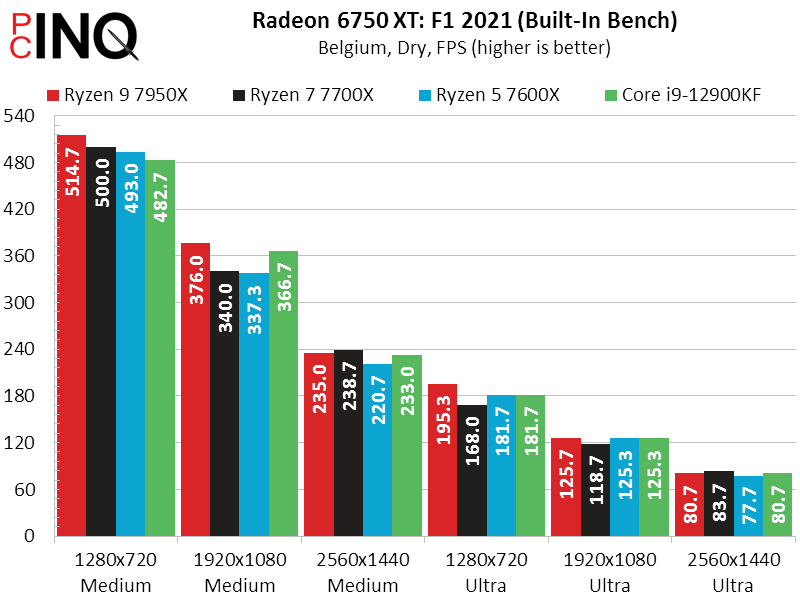
7-Zip was one of the first benchmarks we saw to prove the advantages of DDR5, and it also shows the superiority of more cores and higher clocks. The 7950X leaves the 12900KF in shambles here, as well as in Cinebench, Corona Benchmark and Handbrake.




The 7950X amazingly appears to idle its second CCD down to a mere 3W. Of course those extra cores pull an extra 100W of power under load. It’s at this point where observers will likely realize that ASRock’s default Z690 Taichi settings do far less to maintain Intel’s rated power levels than its X670E Taichi does for AMD’s. Before we scream about ASRock cheating on Intel’s behalf, we remind ourselves that we also saw AMD’s PBO ratios working by default.
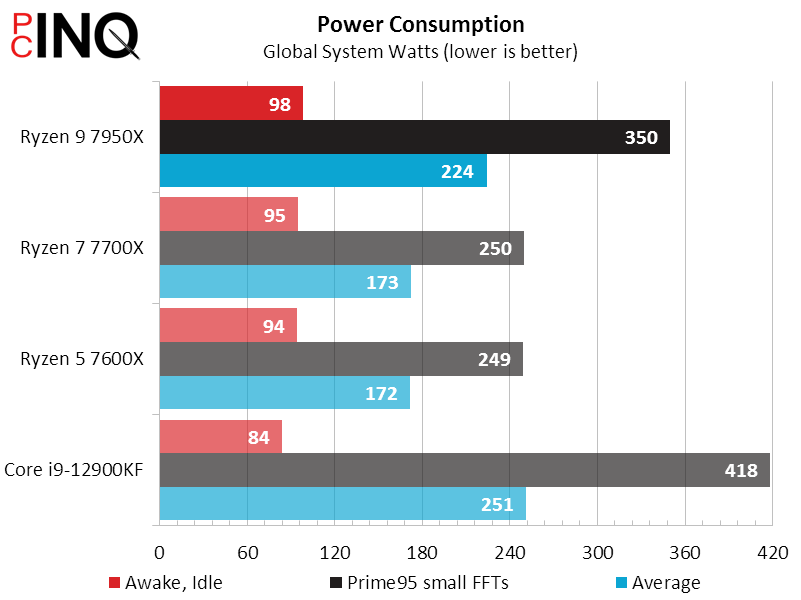
It makes sense that that the 7950X’s extra hardware would make more heat, particularly at the motherboard’s voltage regulator, yet the 7600X’s high core temperatures make less sense. There may be a problem with this sample’s internal thermal interface (between its CCD and heat spreader).
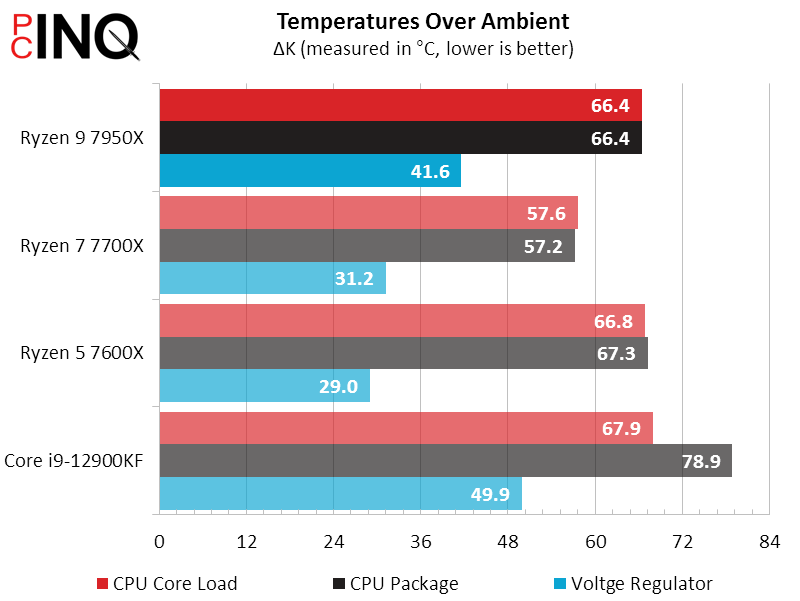
A 33.3% lead in timed apps helps push the Ryzen 9 7950X to a 12.8% performance victory over the Core i9-1290KF. The Ryzen 9 also drew 10.8% less power on average, giving it a big 26.4% improvement in energy efficiency. Maybe we won’t complain so much about the Ryzen 9’s wasteful packaging.

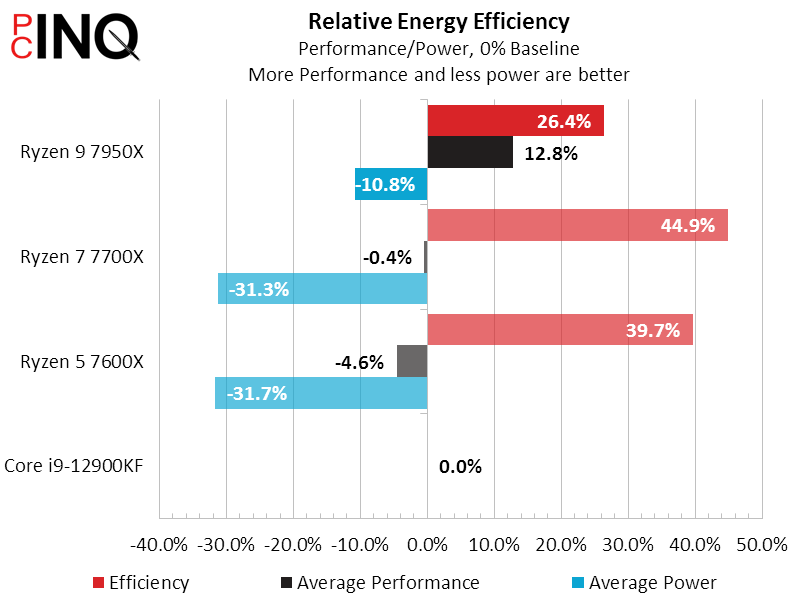
Overclocking our 7950X sample was very disappointing, from its small core clocks to its low DRAM limit. The 7600X’s superiority is likely due to its reduced core count and comes despite its worse thermal transfers.


We’re aware that Intel has recently released a new processor to replace the 12900KF, but our sample never arrived. When that didn’t happen, we searched the web to find out if its newfound performance would overtake the Ryzen 9 7950X, only to learn that it doesn’t. Intel’s new model retains a double-digit pricing advantage while whittling down the 7950X’s performance lead to single digits.
| AMD Ryzen 9 7950X | |
| Pros | Cons |
|
|
| The Verdict | |
| The Ryzen 9 7950X beats Intel’s Core i9 12900KF by a wide performance margin while also consuming less energy. | |
Get it at Amazon

(click for availability)
There’s still an award that the 7950X can win despite its high price: Excellence is reserved for the best product in its class, and the Ryzen 9 7950X remains the greatest mainstream desktop processor even when priced beyond the reach of we plebeians.

